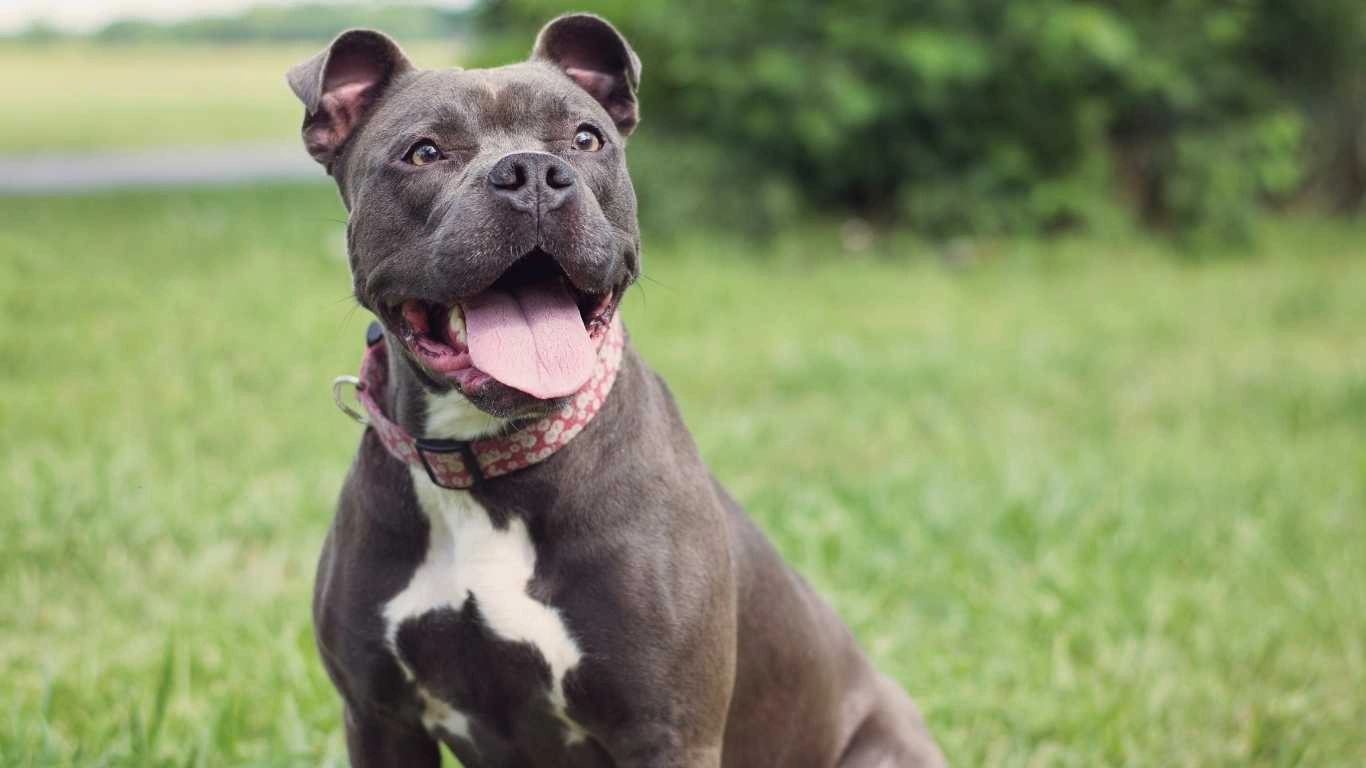How to Add Fiber to a Dog’s Diet Naturally for Healthier Digestion
Let’s talk about something I’ve come across more times than I can count during my years working in pet clinics and animal shelters—doggy digestion problems. One question that pops up surprisingly often is how to add fiber to a dog’s diet naturally. And honestly, I totally get it. Whether it’s constipation, diarrhea, or just a pup that seems a little “off,” fiber can be a game-changer. But before you grab the nearest bran cereal or can of pumpkin, let’s break down what “natural” really means when it comes to dog diets—and why it matters more than most people think.
Why Fiber Matters More Than You Think

In the clinic, I’ve seen dogs bounce back from all kinds of tummy issues just by tweaking their fiber intake. It’s one of those things that seems simple, but makes a massive difference. Fiber doesn’t just keep things moving along in the digestive tract—it helps regulate blood sugar, supports healthy weight, and can even reduce the risk of certain diseases.
There are two main types of fiber: soluble and insoluble. Soluble fiber turns into a gel in the gut, slowing digestion and helping with nutrient absorption. Insoluble fiber adds bulk to the stool and keeps everything moving. The key is finding the right balance based on your dog’s individual needs—something I always emphasized when speaking with pet parents face to face.
Common Signs Your Dog Needs More Fiber
Here are a few signs I often saw that hinted a pup might benefit from more fiber:
- Loose or inconsistent stools
- Constipation or straining during bowel movements
- Excessive gas or bloating
- Frequent anal gland issues (yes, the scooting!)
- Sudden weight gain or trouble maintaining a healthy weight
If your dog is showing any of these signs, don’t panic—it’s super common, and there are natural fixes.
Top Natural Ways to Add Fiber to Your Dog’s Diet

1. Pumpkin (Plain, Canned, No Sugar Added)
This one’s a clinic favorite. When dogs came in with digestive issues, canned pumpkin was practically a go-to remedy. Just a spoonful mixed into their food works wonders. It’s packed with soluble fiber and gentle on the stomach. I’ve personally seen dogs with both diarrhea and constipation improve after just a couple of servings.
2. Sweet Potatoes
Another natural, tasty option. Cooked and mashed sweet potatoes are not only easy to digest, but they’re also full of vitamins like beta-carotene. I remember one rescue pup who had chronic soft stools—adding sweet potato to her meals helped stabilize things within a week.
3. Green Beans
Low in calories and high in insoluble fiber, green beans are awesome if your dog needs to shed a few pounds while still feeling full. I often recommended them as a healthy snack or meal topper. Just steam them plain and cut them up small, especially for smaller breeds.
4. Apples (No Seeds!)
A few slices of apple can provide fiber and a natural crunch dogs love. Be sure to remove the seeds and core first. I used to keep apple slices at the clinic for treat time—they were always a hit and a healthier alternative to processed biscuits.
5. Ground Flaxseed
Flaxseed is loaded with omega-3s and fiber. I used to mix it into wet food or sprinkle it over kibble. It supports coat health and digestion at the same time. Just remember: a little goes a long way—too much and you might get the opposite of what you’re looking for.
6. Carrots
Crunchy, fibrous, and full of beta-carotene. Dogs usually love them raw or steamed. I used them often as a boredom-busting snack, especially for high-energy dogs who liked to chew on everything in sight.
Things to Watch Out For When Adding Fiber

Even though natural fiber can be super helpful, it’s not a one-size-fits-all situation. I’ve had pet parents go a little overboard with the pumpkin or veggies, and suddenly their dog swings from constipation to diarrhea—or just ends up gassy and uncomfortable.
Here are some quick tips I used to give my clients to avoid overdoing it:
- Start slow—introduce one fiber source at a time.
- Watch your dog’s poop (yep, I said it)—it tells you everything you need to know.
- Keep portions small until you know how your dog reacts.
- Talk to your vet if your dog is on medication or has a health condition.
Adding fiber the right way is a balancing act—but totally doable once you know what to look for. And when you get it right, the benefits are amazing. I’ve seen dogs who struggled for months with digestive problems suddenly perk up, get more playful, and even improve their coats—all because of a better diet.
How to Add Fiber to a Dog’s Diet Naturally Without Upsetting Their Stomach

So, now that we’ve covered why fiber matters and some go-to sources, let’s talk about the tricky part—how to add fiber to a dog’s diet naturally without throwing their digestive system into chaos. I’ve had more than a few clients over the years who got a little too enthusiastic, dumped half a can of pumpkin into their pup’s bowl, and ended up calling me in a panic about their dog’s unexpected bathroom emergencies.
The trick is to be intentional and patient. Dogs aren’t built to process drastic diet shifts overnight. Their gut bacteria need time to adjust, and your dog needs time to get used to the taste and texture of new foods—especially if you’ve got a picky eater or a senior dog with a sensitive tummy.
My Go-To Rule: Start Small and Stay Observant
Here’s the simple strategy I always shared with new pet parents:
- Start with one new fiber source at a time — no mixing everything at once like a canine smoothie bar.
- Begin with a small portion — like a teaspoon of pumpkin or a couple of chopped green beans.
- Watch your dog’s behavior and stool for at least 48 hours before adding anything else.
Dogs will tell you everything with their body language and, yes, their poop. If things firm up or become more regular, you’re on the right track. If you notice bloating, gas, or diarrhea, dial it back or try a different fiber source.
Homemade Dog Meals and Toppers for Extra Fiber

I’ve worked with a lot of pet parents who liked the idea of going the homemade route, either full-time or just as a supplement. If that’s you, great! Homemade meals give you full control over ingredients and make it easy to sneak in some natural fiber without the guesswork.
Simple DIY Fiber Boosting Mix-Ins
Here are a few mix-ins I’ve personally used and recommended over the years. These work well with dry kibble, wet food, or even as a little snack on their own:
- Cooked oatmeal – unsweetened, plain oats cooked in water. Add a tablespoon to a small breed’s meal or a bit more for larger dogs.
- Chia seeds – soak them first! They become gel-like and are easy to mix into food. Bonus: they help with hydration too.
- Cooked lentils – packed with protein and fiber. Just make sure they’re fully cooked and unseasoned.
- Mashed peas – fiber-rich, naturally sweet, and most dogs love the taste.
Remember to cook and cool these ingredients properly and avoid adding salt, butter, or seasoning—your dog doesn’t need the extra stuff we humans usually include in our meals.
Pro Tip From the Shelter: Batch It
One thing I used to do at the shelter (because time was always tight) was prep a big batch of these mix-ins once a week and freeze them in ice cube trays. That way, I could just pop out a cube or two and mix them into meals. Dogs love the variety, and it saved me so much hassle during the busy morning feeding rush.
What About Store-Bought Fiber Options?

Okay, let’s be real. Not everyone has time to steam green beans and soak chia seeds every day. Life happens. When I was managing both clinic work and home life, there were definitely days when I leaned on store-bought options—and that’s totally okay as long as you’re mindful about ingredients.
Tips for Choosing the Right Fiber Supplement or Dog Food
- Read the ingredient list – look for real food like pumpkin, oats, beet pulp, or flaxseed near the top.
- Avoid fillers and artificial stuff – if you can’t pronounce it or it sounds like a science experiment, skip it.
- Opt for limited ingredient diets – especially helpful for dogs with sensitivities or allergies.
- Consult your vet – especially if your dog is on medication or has a chronic condition like diabetes or pancreatitis.
I had one regular client, a senior Labrador named Marley, who had recurring constipation. His owner switched him to a high-fiber, limited-ingredient kibble that included barley and sweet potatoes. Within two weeks, he was happier, more active, and doing his business like a champ. No more dragging his butt across the yard—always a win in my book!
How Much Fiber Is Too Much?
This is the part where people often trip up. While fiber is great, too much of it can cause just as many issues as too little. I saw this a lot with well-meaning owners who figured, “If a little is good, more must be better.” Not quite.
Watch for These Red Flags
- Sudden or ongoing diarrhea
- Gas that could clear a room (seriously, I’ve been there!)
- Loss of appetite or skipping meals
- Unexplained weight loss
If you notice any of these, reduce the fiber immediately and go back to basics. You can always reintroduce it gradually after giving your dog’s gut a break. And don’t feel bad—it happens to the best of us. Even I overdid it once with a shepherd mix that loved pumpkin a little *too* much.
Also, it’s worth remembering that every dog is different. What works wonders for your neighbor’s pup might not sit well with yours. Breed, age, activity level, and even temperament can all play a role. That’s why I always recommend keeping a little feeding journal when making dietary changes—just jot down what you added, how much, and how your dog responded. It’s a simple habit that can prevent a ton of guesswork later.
When to Consult a Vet About Your Dog’s Fiber Intake

Let’s face it: there are moments when we all have questions, especially when it comes to our furry friends. As someone who spent years in animal care, I can tell you that sometimes the right answer isn’t just more fiber—it’s a full vet check. There are a few situations when you should definitely consult a professional about your dog’s digestive health and fiber intake.
1. Chronic Digestive Issues
If your dog has persistent diarrhea, constipation, or irregular bowel movements despite dietary adjustments, it could signal an underlying health issue. In those cases, it’s important to consult your vet for a full workup. From gastrointestinal disease to thyroid imbalances, there are many conditions that could require medical intervention beyond just fiber.
2. Significant Weight Loss or Appetite Changes
Any time you notice a drastic weight change or a sudden loss of appetite, it’s time to get your dog checked out. Digestive problems or changes in appetite could be tied to serious issues like kidney disease, diabetes, or even cancer. While fiber can help with weight management, it’s always worth getting a professional opinion if something seems off.
3. Medication Interactions
If your dog is on any long-term medication, be sure to talk to your vet before adding fiber. Some drugs can affect how fiber is digested, and adding too much fiber too quickly can interfere with your dog’s ability to absorb the medication properly. It’s a balance, and your vet can help you figure out the best course of action.
Fiber and Special Diets: A Custom Approach
Every dog is unique—especially when it comes to their health needs. That’s why customizing their fiber intake to fit their individual needs is so important. Dogs with specific health conditions may need tailored diets, and fiber intake plays a significant role in that.
Fiber for Senior Dogs
Senior dogs often have slower metabolisms and less active lifestyles, which can result in digestive issues. A fiber-rich diet helps keep their digestive systems in check. However, it’s important to choose easily digestible fibers and avoid too many harsh, gas-producing ingredients. At the clinic, I recommended foods with gentle fiber sources, like pumpkin and sweet potatoes, to keep older dogs regular without causing bloating.
Fiber for Dogs with Diabetes
Fiber can be a great ally for diabetic dogs because it helps regulate blood sugar levels. Soluble fiber, in particular, slows down the absorption of sugar from the intestines. If your dog is diabetic, working with your vet to ensure a balanced, fiber-rich diet can help them maintain steady glucose levels and avoid spikes and crashes.
Fiber for Overweight Dogs
For dogs who need to lose a few pounds, fiber is one of the best tools in your toolkit. Fiber helps dogs feel fuller for longer, reducing the likelihood of begging for extra treats or meals. I’ve seen dogs lose weight without feeling deprived just by swapping high-calorie treats for fiber-rich veggies or switching to a high-fiber dog food. But again, moderation is key. Too much fiber can cause its own set of issues like bloating and discomfort, especially in dogs not used to it.
Additional Considerations for Fiber in Your Dog’s Diet

Adding fiber to your dog’s diet is a step toward better health, but it’s important to take a holistic approach. Dogs, just like people, need a balanced diet that includes proteins, fats, and carbohydrates. Fiber shouldn’t be the only focus, but a key piece in the puzzle.
Variety is Key
Variety is crucial in maintaining a balanced diet for your dog. While adding fiber is important, it’s equally essential to provide a range of other nutrients. Make sure your dog’s meals include protein sources like chicken, turkey, or fish, and healthy fats like those found in salmon oil or flaxseed. A mix of natural fiber sources, such as pumpkin, sweet potatoes, and peas, helps ensure that your dog is getting all the benefits of fiber without overdoing any one kind.
Monitor Your Dog’s Weight and Condition Regularly
Throughout the process of introducing more fiber into your dog’s diet, it’s vital to regularly monitor their weight and overall health. This will help you gauge whether the new diet is working and if any adjustments need to be made. Whether it’s through simple at-home weigh-ins or a quick visit to the vet for a health check, staying on top of your dog’s condition will ensure they’re thriving.
Important Resources
If you want to dive deeper into dog nutrition and fiber, there are a few reliable resources that can help you navigate the ins and outs of pet health. Here are some websites I personally refer to often for guidance:
- American Kennel Club (AKC) – For breed-specific nutritional advice and overall health tips.
- PetMD – Offers expert advice on all things pet health, including diet and fiber needs.
- National Institutes of Health (NIH) – Trusted information on the latest health research, including animal care and nutrition.
- Health.com – For general wellness, including tips on natural nutrition and digestive health.
Disclaimer
The information in this article is based on my experience as an Animal Care Specialist and is for informational purposes only. Always consult with a licensed veterinarian before making significant changes to your dog’s diet, especially if they have pre-existing health conditions or are on medication. Every dog is different, and what works for one may not work for another.






